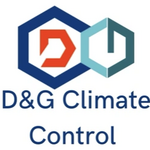@heacol we have a buffer tank in the loft. From memory its 30 litres, but I might be wrong.
@heacol honestly I'd have to go up there and take a look. I know we have two pumps. One for upstairs and one for downstairs as the building insulation means we have them on separate systems
The pumps are more than likely too small and not capable of transferring sufficient water to deliver the heat. However, the buffer thank is stealing at least 5 Deg C from your system, maybe more. To get your system running properly, you need to remove the thermostat, remove the buffer tank and all the necessary un-equipment, push the water from the heat pump directly to your radiators, remove all TRV's to start, in areas that get too hot replace them but at least halve the radiators must have no control. Change the heat pump to run with weather compensation and you will find that your house is much more comfortable and your bills will be reduced. Even at 10p, I am sure you do not want to throw money away?
@heacol we already have weather comp. But I had to adjust the curve as the high 20s just wasn't cutting it for keeping the house warm. I'll have to look into the practicalities of your suggestions and the costs of doing so. It's not a basic task. First and foremost for me is getting more heat from the existing rads as I'm pretty sure the system just isn't balanced properly
@batalto Unfortunately, if you do not do things properly, it may not work. Like trying to drive a car without pumping up the tyres. It is all there but it does not work very well.
Posted by: @batalto@derek-m not sure I've been listening lol. My minimum temperature is set to 37° and the house is much more comfortable than it was with the water temperatures in the 20s. That said the radiators in our main room are far colder, so I think they need balancing.
As a note, I've never seen the ASHP use more than 3kw at any point yet. It's a 12kw pump, so it's performing admirably as far as I can see.
Hi Batalto,
I assume that all your radiators are fully bled.
In theory your radiators should all reach the same temperature when your central heating pump is running. One reason that they may not reach the same temperature is if they are on the end of the loop and the pump is switching off before they get up to temperature. Another reason could be that there is a restriction to the flow to those particular radiators.
Posted by: @heacol@batalto 37 Deg C is vey high at this time of the year, I would expect to be running at least 10 Deg lower than that, however, it you have buffer tanks, system seperation, TRV's and thermostats, that is why you have to keep it that high with a resulting reduction in performance and increased electricity bill.
Would a radiator at 27 C actually heat a room to 21 C? I tried Stelrad's calculator at a delta T of 6 and 10 C outside temp for my 9m2 study and they didn't have one big enough. Or have I misunderstood what you're suggesting?
Posted by: @kev-mPosted by: @heacol@batalto 37 Deg C is vey high at this time of the year, I would expect to be running at least 10 Deg lower than that, however, it you have buffer tanks, system seperation, TRV's and thermostats, that is why you have to keep it that high with a resulting reduction in performance and increased electricity bill.
Would a radiator at 27 C actually heat a room to 21 C? I tried Stelrad's calculator at a delta T of 6 and 10 C outside temp for my 9m2 study and they didn't have one big enough. Or have I misunderstood what you're suggesting?
Hi Kev,
The required water flow temperature is not fixed, but will vary throughout the day as the heat loss and hence heat demand varies. I don't have the exact figures, but today up until lunchtime when the rain eased off, the water flow temperature on our system was probably in the low 30's. After lunch it dropped to the high 20's and it is now back up to the low 30's.
The tests and observations I have been carrying out over several years, shows that under most conditions at our home, a 1C fall in outdoor air temperature requires approximately a 1C increase in water flow temperature, to maintain the 21C desired indoor temperature. On windy and rainy days it may be slightly higher because of increased heat loss.
When the outside air temperature initially falls, a thermostat controlled system will not immediately respond, since it takes time for the change in temperature to permeate through the insulation and have an affect inside. It is only after the temperature change is sensed by the thermostat that the system will respond. It will then be playing catch up. The opposite will occur as the outside air temperature increases.
With weather compensation, as the outside air temperature starts to fall, the water flow temperature will gradually be increased to try to maintain the indoor temperature at the desired setting. The converse will happen as the outside air temperature increases.
In this way the water flow temperature is kept at the lowest temperature that is required to maintain the indoor temperature.
Most controllers have a number of weather compensation curves so that the system can be matched to your home's particular requirements. It could be that for every 1C change in outdoor air temperature, your home requires a 1.2C change in water flow temperature. This is where the 'fine tuning' of your system is required to find which weather compensation curve gives best results at your home. In fact it may be necessary to change from one curve to the next during different times of the year.
As Brendon has pointed out, having active weather compensation and thermostats in the same control system can provide conflicting information which may prevent the system from operating at its optimum.
Unless the system has been designed and installed by suppliers who fully understand weather compensation and how it operates, it may take time and effort to fully optimise the system afterwards.
Posted by: @derek-mPosted by: @kev-mPosted by: @heacol@batalto 37 Deg C is vey high at this time of the year, I would expect to be running at least 10 Deg lower than that, however, it you have buffer tanks, system seperation, TRV's and thermostats, that is why you have to keep it that high with a resulting reduction in performance and increased electricity bill.
Would a radiator at 27 C actually heat a room to 21 C? I tried Stelrad's calculator at a delta T of 6 and 10 C outside temp for my 9m2 study and they didn't have one big enough. Or have I misunderstood what you're suggesting?
Hi Kev,
The required water flow temperature is not fixed, but will vary throughout the day as the heat loss and hence heat demand varies. I don't have the exact figures, but today up until lunchtime when the rain eased off, the water flow temperature on our system was probably in the low 30's. After lunch it dropped to the high 20's and it is now back up to the low 30's.
The tests and observations I have been carrying out over several years, shows that under most conditions at our home, a 1C fall in outdoor air temperature requires approximately a 1C increase in water flow temperature, to maintain the 21C desired indoor temperature. On windy and rainy days it may be slightly higher because of increased heat loss.
When the outside air temperature initially falls, a thermostat controlled system will not immediately respond, since it takes time for the change in temperature to permeate through the insulation and have an affect inside. It is only after the temperature change is sensed by the thermostat that the system will respond. It will then be playing catch up. The opposite will occur as the outside air temperature increases.
With weather compensation, as the outside air temperature starts to fall, the water flow temperature will gradually be increased to try to maintain the indoor temperature at the desired setting. The converse will happen as the outside air temperature increases.
In this way the water flow temperature is kept at the lowest temperature that is required to maintain the indoor temperature.
Most controllers have a number of weather compensation curves so that the system can be matched to your home's particular requirements. It could be that for every 1C change in outdoor air temperature, your home requires a 1.2C change in water flow temperature. This is where the 'fine tuning' of your system is required to find which weather compensation curve gives best results at your home. In fact it may be necessary to change from one curve to the next during different times of the year.
As Brendon has pointed out, having active weather compensation and thermostats in the same control system can provide conflicting information which may prevent the system from operating at its optimum.
Unless the system has been designed and installed by suppliers who fully understand weather compensation and how it operates, it may take time and effort to fully optimise the system afterwards.
@derek-m, I have a reasonable understanding of how weather compensation works; you can see it working in the graphs I posted earlier. I've also seen flow temps in the low 30s but I think my house would lose heat if my radiators were 27 C and it was 8-10 C outside. Over the last month flow temps averaged mid 30s. I plan to try different curves/heating timings but I don't think 27 C will ever be enough.
What I am saying is that what works for one house will not necessarily work for another. It could be that your home requires a flow temperature in the low to mid 30's. For optimum efficiency, you need to run your system with the lowest water flow temperature that meets your heat demand. Don't get tied up with actual figures.
From the calculations that I performed several weeks ago, lowering your indoor temperature by 1C should give an approximate 10% reduction in energy consumption. Lowering your heat demand by 20% with improved insulation, should give an approximately 25% reduction in energy consumption. Increasing the size or output of heat emitters also reduces energy consumption.
All of the above would allow your system to operate at lower water flow temperatures and hence improved efficiency.
It is for people who have already installed ASHP's to decide what if anything they can do, or wish to do, to improve the efficiency of their system.
For those people considering having an ASHP installed, one of the key factors should be how is the system to be controlled, particularly how will weather compensation be incorporated. If a proposed installer cannot offer a design that fully incorporates weather compensation, I would question their knowledge of ASHP systems and how their operation can be optimised. From many of the comments I have read on the forum and elsewhere, it would appear that there are many companies who can install an ASHP, but far fewer who can optimise its operation.
- 26 Forums
- 2,342 Topics
- 53 K Posts
- 297 Online
- 6,000 Members
Join Us!
Worth Watching
Latest Posts
-
Mitsubishi Ecodan Auto Adaption trial to stop cycling.
We have a 11.2 kWh over sized heat pump, ufh downstairs...
By @sand , 29 minutes ago
-

RE: Advice on internal circulation pump noise
I used to (and still do to some extent) have "water fl...
By MikeFl , 57 minutes ago
-
RE: Who's your electricity provider and what's your tariff?
The Next export tarrif was fixed for 12 months so until...
By JamesPa , 4 hours ago
-
Agree with @majordennisbloodnok on the setbacks. We hav...
By ChandyKris , 14 hours ago
-

RE: Heat Pump Heats the House… But It’s Not Cosy. Emitter Changes or System Tweak?
A quick Google search showed that building regulations ...
By GrahamF , 15 hours ago
-
RE: Octopus Cosy Heat Pump Owners & Discussion Thread
@agentgeorge I first heard (read) about it on FB this m...
By AndrewJ , 15 hours ago
-
RE: New Fogstar 15.5kWh upright solution
It is a matter of luck. 2ith Fogstar "instructions", to...
By Batpred , 15 hours ago
-

RE: Speedcomfort radiator fans
@deltona the way the links were added broke the page. A...
By Mars , 15 hours ago
-

RE: Setback savings - fact or fiction?
I agree! Even more so if we get an answer! But the chal...
By cathodeRay , 17 hours ago
-

RE: Refrigerant R32, is it now banned in the EU from 1st Jan 2027 for monobloc ASHPs?
This has been delayed from what I believe to be this ye...
By dgclimatecontrol , 21 hours ago
-
RE: Are We Sleepwalking Into Another Race to the Bottom?
this is why I provided current flow temperatures in the...
By ksim , 22 hours ago
-

RE: Why Millions of UK Homes Struggle With Heat Pumps
There's many homes that would be quite a disruption for...
By dgclimatecontrol , 22 hours ago
-
RE: Ecodan unable to hit legionella target temp - what's the consensus?
@rhh2348 ...maybe this option is what you want? Alter...
By benson , 22 hours ago
-

RE: Free Ecoheat Heat Pump Install
@old_scientist This does make the unit smaller as the b...
By dgclimatecontrol , 22 hours ago
-
RE: Ecodan - Legionella Operation Time and Target Temperature
@old_scientist hiya mate, did you ever get to the botto...
By 9jwr9 , 1 day ago
-
RE: Configuring third party dongle for Ecodan local control
@majordennisbloodnok I think the HPDHD diagnosis may be...
By Sheriff Fatman , 2 days ago
-

RE: External pipework insulation
I don't think we can tell from a photo whether your exi...
By Transparent , 2 days ago
-
RE: Controlling Daikin Altherma via P1P2 and Home Assistant
@majordennisbloodnok That’s correct. I can’t find anywh...
By weoleyric , 2 days ago





